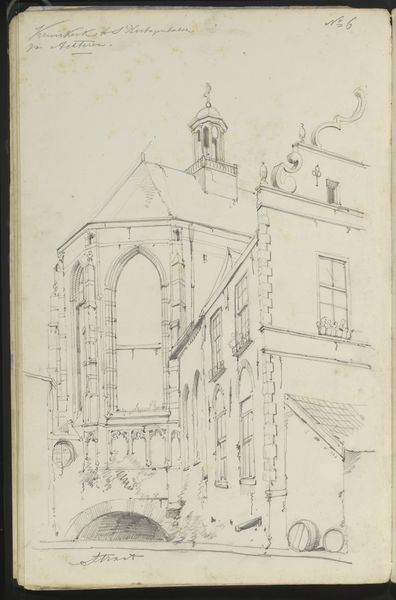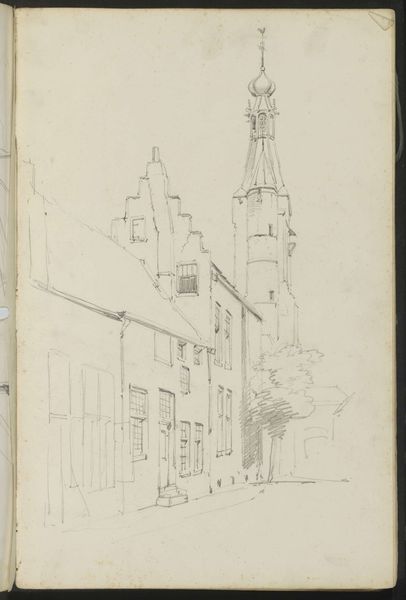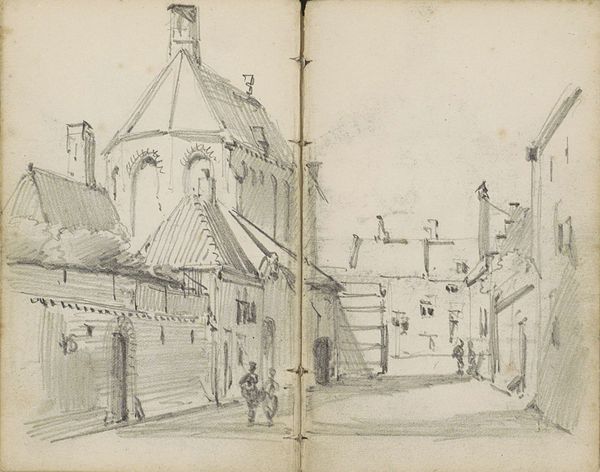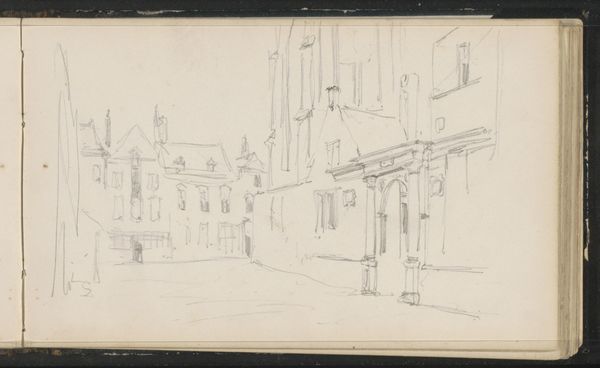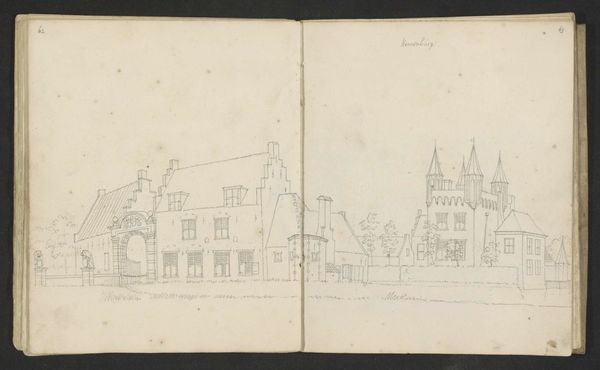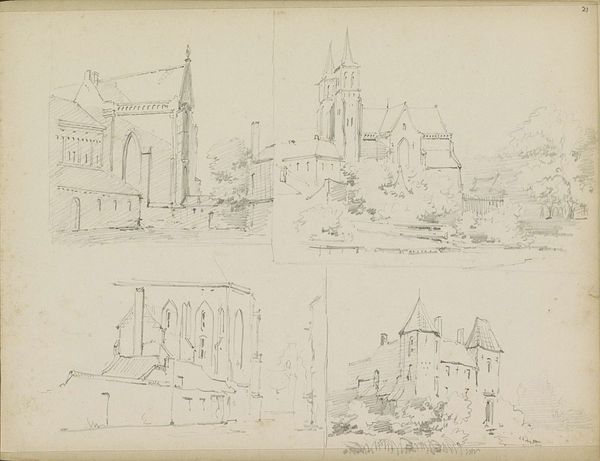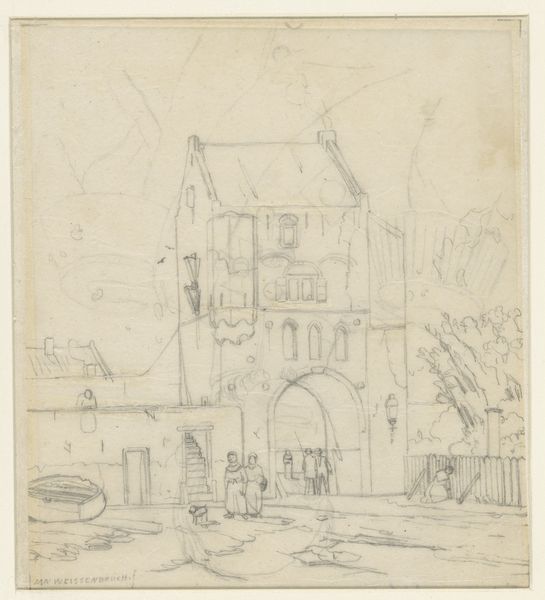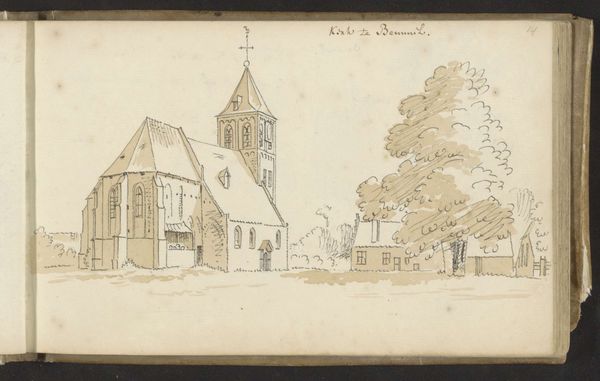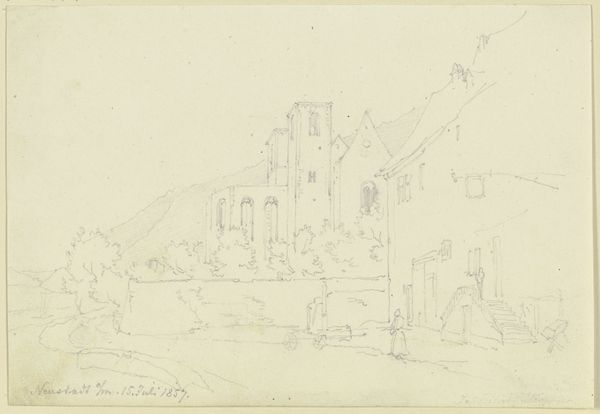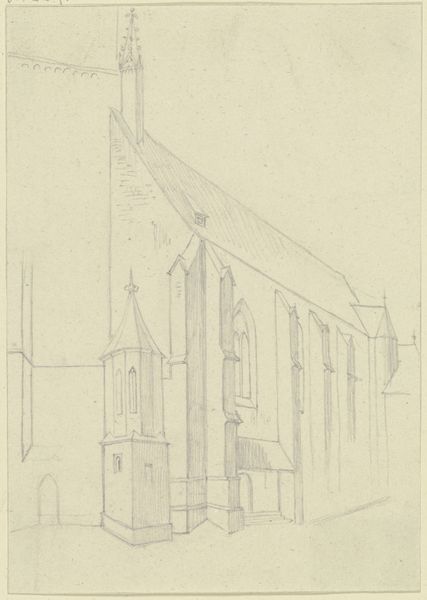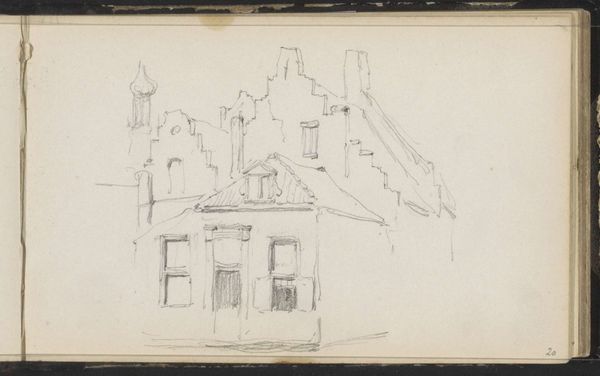
drawing, paper, pencil
#
drawing
#
dutch-golden-age
#
landscape
#
paper
#
pencil
#
cityscape
#
academic-art
#
realism
Copyright: Rijks Museum: Open Domain
Curator: Willem Koekkoek's pencil drawing, "Grote Kerk te Culemborg," created sometime between 1849 and 1895, captures a detailed view of the Great Church within its urban environment. Editor: It strikes me as rather melancholic, doesn't it? There's a certain stillness to the scene, even with the implied presence of the cityscape. You can almost feel the coolness of the stone under your hand. Curator: Indeed. And understanding the period is crucial here. Think about the 19th century in the Netherlands, the evolving social structures, and the rising bourgeoisie— Koekkoek presents a church, a symbol of established order, juxtaposed against the daily life of the city. Editor: Yes, and it’s interesting to consider his tools here. It's "just" pencil and paper, simple tools of mass communication and documentation even then. Not luxurious materials like oil paints favored by the wealthy for commissioned portraits. Does that change the context, make it more about accessible reflection of labor? Curator: It opens that door for sure. We could examine the socio-economic implications of using readily available materials to represent what would have been traditionally painted by members of the upper classes using far more exclusive processes. Furthermore, Koekkoek’s academic realism connects him to an ongoing discourse regarding the representation of Dutch identity during that time period. Editor: The architectural detail speaks volumes to the craftsman's input. See how the pencil lines capture the texture of brick and stone, the careful rendering of the church’s facade… even the slight irregularities! This attention elevates craft into a form of respect, recognizing its labor. Curator: And beyond architectural skill, what I find potent is the understated suggestion of everyday life in that single horse-drawn carriage down the street. It poses interesting questions: Who does this religious site serve, who does it exclude? Editor: Agreed. It really compels one to reflect on the materials of both Koekkoek’s drawing process and the Culemborg's structures. They intertwine and shape the collective consciousness of the city's past and present. Curator: The act of capturing this specific vista through simple material invites us to confront both social and individual constructions of identity. Editor: I leave this viewing with a new lens for viewing a society's physical footprint through its craft.
Comments
No comments
Be the first to comment and join the conversation on the ultimate creative platform.
